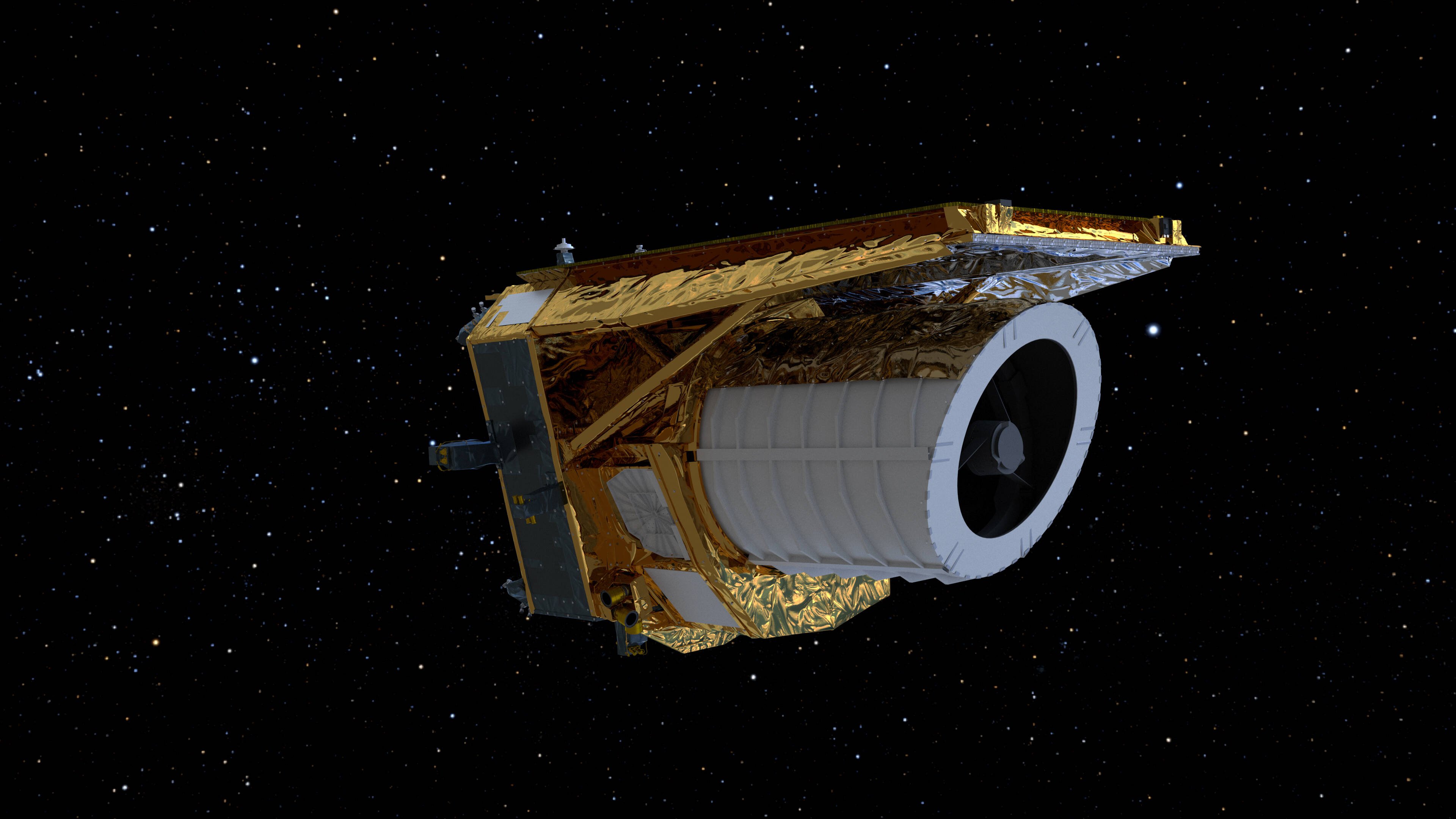Less than 12 months into its six-year survey mission, the European Space Agency’s (ESA) Euclid telescope is experiencing optical issues that require European teams to devise a de-icing procedure.
ESA described the problem as common – water absorbed from the air during assembly is being released now that the spacecraft is in the vacuum of space.
The ice layers are currently only the width of a strand of DNA, but they are disrupting Euclid’s observations, meaning teams need to come up with a new procedure to de-ice the optics.
So what to do? Typically, engineers would turn on the heaters and spend a few days increasing the spacecraft’s temperature from approximately -140°C to -3°C. However, while this would clear the optics, there is also the risk that Euclid’s optical alignment could be affected as the spacecraft cools back down.
ESA said: “This won’t do for such a sensitive mission where effects can be noticed on the optics from a temperature change of just a fraction of a degree, requiring at least several weeks of fine recalibration.”
The plan is to individually heat low-risk parts of the spacecraft and check for improvements in the optics. The challenge lies in identifying the specific surfaces where ice formation occurs, hence the careful approach that should pinpoint the affected area. Once spotted, engineers can warm up that part of the spacecraft in the future when needed.
ESA expects small amounts of water to be released within the spacecraft throughout its lifetime, meaning that the de-icing procedure will likely need to be repeated.
Shortly after launch, an “outgassing campaign” was conducted, in which the heaters were turned on and the spacecraft exposed to the Sun. However, according to ESA, the 10 kg multi-layer insulation covering two of Euclid’s instruments can absorb 1 percent of its weight in water.
Euclid’s mission is to study the nature of dark energy and dark matter, and the space telescope was launched on a SpaceX Falcon 9 rocket on July 1, 2023. Scientists hope to use the spacecraft to build a 3D map of space. A software patch was required in October 2023 to deal with navigation issues. The ice problem was identified when scientists noted a decline in the brightness of stars compared to earlier snaps.
Mischa Schirmer, calibration scientist for the Euclid consortium, said: “Some stars in the universe vary in their luminosity, but the majority are stable for many millions of years. So, when our instruments detected a faint, gradual decline in photons coming in, we knew it wasn’t them – it was us.”
ESA has put a brave face on and noted that surprisingly little research has been published on the issue of ice forming on optical mirrors. The space agency said: “Not only could Euclid reveal the nature of dark matter, but it could also shed light on an issue that has long plagued our roving eyes in space, peering down at Earth and out across the universe.” ®

Dr. Thomas Hughes is a UK-based scientist and science communicator who makes complex topics accessible to readers. His articles explore breakthroughs in various scientific disciplines, from space exploration to cutting-edge research.








